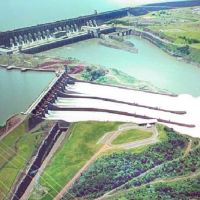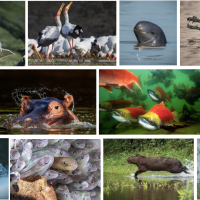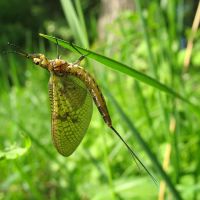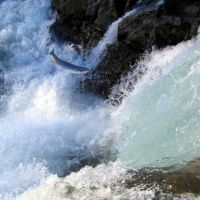Freshwater biodiversity in Indo-Burma under threat
A study has shown that in the Indo-Burma region – an area with one of the highest diversity of life on the planet – freshwater species are at risk from a number of threats.

Fisherman on Inle Lake, Myanmar (Burma). Photo: Shannon Holman
The study, which was conducted by the International Union for the Conservation of Nature (IUCN), found that 13% of all freshwater species in the Indo-Burma global hotspot are at risk of extinction. The Indo-Burma region, which extends from eastern India and southern China across South East Asia, is known as a global biodiversity hotspot and as such is an area that is particularly rich in species diversity. The region also has a high degree of endemism, meaning that certain species are found nowhere else on earth.

Map of the Indo-Burma Project Assessment Area. Blue = Project Area, Pink = Indo-Burma Region. Source: IUCN
The assessment looked at 2,515 known freshwater species, which included species of fish, crabs, molluscs, aquatic plants and dragonflies and damselflies (odonates), in each of the over 1,000 rivers and lakes across the Indo-Burma region. The study took place across Laos, Thailand, Viet Nam, Cambodia and parts of Myanmar (see map showing the boundaries of the project).
The study is important because it contributes to closing the information gap about freshwater biodiversity in the area that currently impairs conservation efforts. The report is also significant because it highlights the threats to people in the area from a loss of freshwater biodiversity. “Freshwater species are incredibly important to livelihoods and economies in the Indo-Burma region,” said the head of the IUCN in South-East Asia, Robert Mather. For example, the region supports the world’s largest inland capture fishery, and according to the report, “without employing a species based approach many species will be lost, leaving in place species-poor and potentially unsustainable fisheries.”
The main threat to freshwater biodiversity in the Indo-Burma region comes from ongoing hydrological development, mainly in the form of dam construction and river clearance for transport. Other threats to freshwater biodiversity in the area include pollution, habitat loss, and over-exploitation for human consumption.

The clear waters of Tonle Sap meet the mirky waters of the Mekong River in Cambodia. Photo: Zeb Hogan.
Will Darwall, co-author of the study and BioFresh member said that “If current plans for the construction of hydroelectric dams proceed as proposed, over the next decade the proportion of fish species threatened by dams is predicted to increase from 19% to 28% and the proportion of mollusc species impacted by dams is likely to increase from 24% to 39% … There is still time for the information in this IUCN report to help large-scale developments – particularly in the energy and water sectors – to proceed in a sustainable way with reduced impact on freshwater species and the dependent livelihoods.”
Dam construction in the Indo-Burma region, particularly along the Mekong river, has been a source of international tension and the findings of this study are another reason to look for viable alternatives or at the very least proceed with caution. One option may be to designate particularly significant areas as ‘Freshwater Protected Areas’, as most conservation efforts focus on terrestrial or marine ecosystems and as a result often miss out important freshwater habitats.
The high level of biodiversity in the rivers and lakes of Indo-Burma and the valuable ecosystem services they provide to the livelihoods of millions of people in the region requires a more nuanced consideration of large-scale hydrological developments and greater protection for the area’s freshwater species and ecosystems.
A full version of the report can be accessed here.
All species assessments are also published on the IUCN Red List of Threatened Species.














